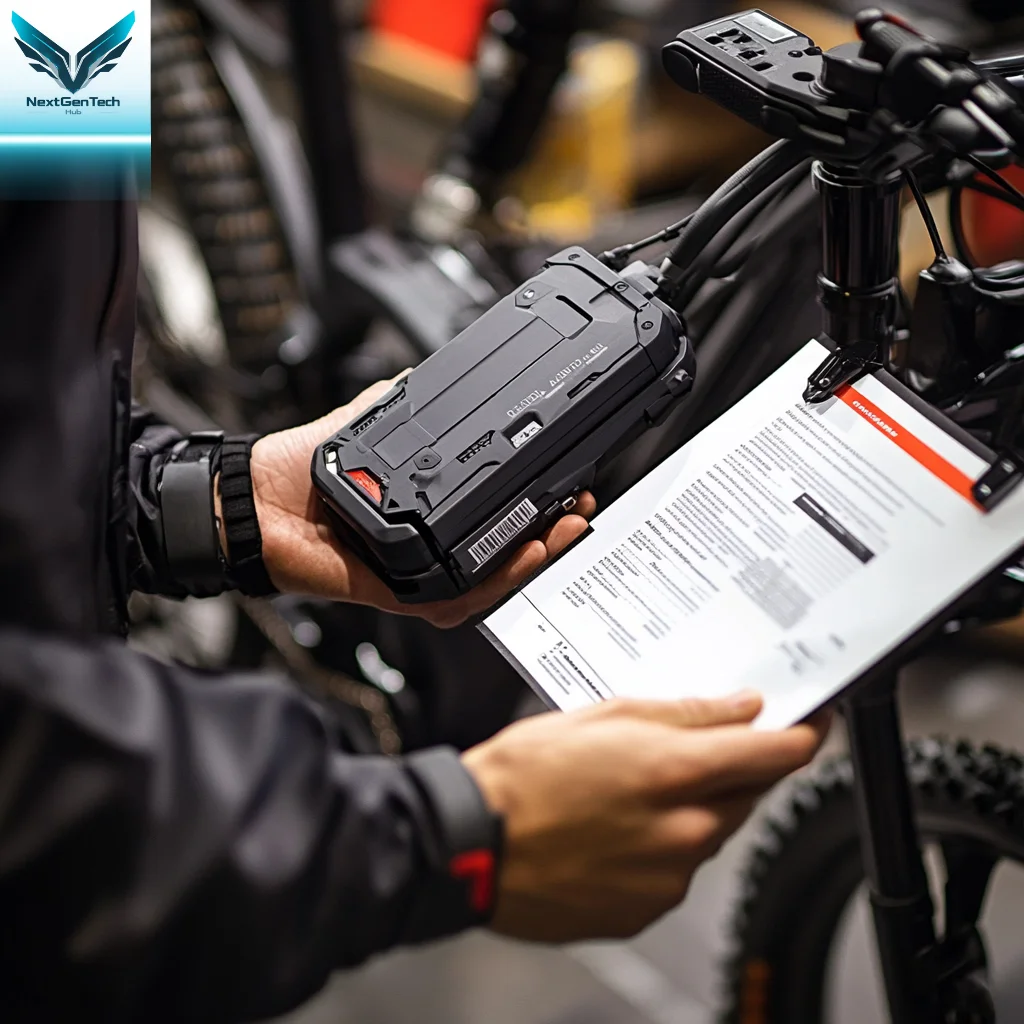
Electric bikes (e-bikes) are revolutionizing urban transportation, offering an eco-friendly, efficient, and fun way to get around. But at the heart of every electric bike is its battery, the powerhouse that determines your bike’s range, speed, and overall performance. Choosing the right battery is critical if you want to optimize your e-bike experience. Whether you’re commuting through the city, riding through tough terrain, or enjoying weekend leisure rides, a well-chosen battery ensures that you can go the distance without interruptions.
In this comprehensive guide, we’ll walk you through everything you need to know about choosing the best battery for your electric bike. We’ll provide updated information, real-world product comparisons, and expert insights to help you make an informed choice. Whether you’re upgrading or buying a new e-bike, this guide will help you maximize the range, performance, and lifespan of your bike’s battery.
Table of Contents:
- Introduction: Why the Right Battery Matters
- Understanding the Basics of E-Bike Batteries
- Types of E-Bike Batteries
- Step-by-Step Guide to Choosing the Best Battery
- Latest Battery Options and Comparisons
- How to Maximize Your Battery’s Life
- Real-World Case Studies
- FAQs
- Conclusion
1. Introduction: Why the Right Battery Matters

Your e-bike’s battery is more than just a power source—it’s the lifeblood of your bike’s performance. A well-chosen battery can offer you more range, faster charging times, and a longer lifespan. On the flip side, a poor battery choice can leave you stranded mid-ride or dramatically shorten your bike’s lifespan. Whether you’re planning long-distance commutes, weekend adventures, or short city rides, selecting the right battery ensures that your bike meets your performance expectations.
Key Considerations:
- Distance: How many miles can you cover on a full charge?
- Weight: Will the battery weigh your bike down or keep it agile?
- Performance: Does the battery provide the power needed for your riding style (hills, city roads, long rides)?
- Lifespan: How many charge cycles will the battery last before performance degrades?
2. Understanding the Basics of E-Bike Batteries

An e-bike battery provides power to the electric motor, helping the bike move and assisting your pedaling. Batteries come in different types, capacities, and sizes, and understanding the basics is essential to making the right decision.
Important Terms to Know:
- Voltage (V): The force that drives electric current through the motor. Higher voltage equals more power.
- Ampere-hours (Ah): A measure of battery capacity. A higher number means the battery can store more energy.
- Watt-hours (Wh): The measure of the total energy capacity a battery can hold. It’s a result of multiplying voltage by capacity (Ah). The higher the watt-hours, the longer the range.
3. Types of E-Bike Batteries

Different battery types affect performance, weight, and cost. Here’s an overview of the most common types of batteries used in electric bikes:
1. Lithium-Ion (Li-Ion) Batteries
- Most Popular: These are the go-to for most e-bikes due to their high energy density, long lifespan, and lightweight design.
- Pros: Long-lasting, light, and fast charging.
- Cons: Slightly more expensive than other options.
2. Lithium Iron Phosphate (LiFePO4)
- High Safety and Durability: While heavier, LiFePO4 batteries are known for their thermal stability and longer lifespan.
- Pros: Safer, more charge cycles, and longer-lasting.
- Cons: Heavier and bulkier.
3. Nickel-Metal Hydride (NiMH)
- Old Technology: NiMH batteries have become less common as Li-ion batteries have become more affordable.
- Pros: Relatively cheap.
- Cons: Lower energy density and shorter lifespan compared to lithium-ion batteries.
4. Lead-Acid Batteries
- Rarely Used: These are the oldest type of battery and are not commonly found in modern e-bikes due to their weight and short lifespan.
- Pros: Extremely low-cost.
- Cons: Very heavy, short lifespan, and inefficient.
Verdict: Lithium-ion batteries are the best option for most riders due to their balance of weight, power, and longevity.
4. Step-by-Step Guide to Choosing the Best Battery
Step 1: Assess Your Riding Needs

Before choosing a battery, it’s essential to consider how you plan to use your e-bike. Different riding styles and terrains require different battery specifications:
- Daily Commuter: Look for a battery with a mid-range capacity (10-15Ah) and moderate voltage (36V) for flat urban terrain.
- Long-Distance Adventurer: Opt for a high-capacity (15Ah or more) battery to cover longer distances. A higher voltage (48V) will also give you more power for hills.
- Weekend Rider: If you’re a casual rider, a low-capacity battery (<10Ah) may be sufficient.
Step 2: Choose the Right Battery Chemistry

As discussed earlier, Lithium-Ion batteries offer the best combination of lightweight design, high power output, and long cycle life. For most riders, Li-Ion is the way to go. However, if safety and longevity are your primary concerns, LiFePO4 is an excellent alternative.
Step 3: Determine the Capacity (Ah) and Range

Capacity, measured in ampere-hours (Ah), affects how far your e-bike can travel on a single charge. Here’s a rough guide on how capacity translates into range:
| Battery Capacity (Ah) | Approx. Range (Miles) | Best For |
|---|---|---|
| 7-10Ah | 15-30 miles | Casual riders, short commutes |
| 10-15Ah | 30-50 miles | Daily commuters, moderate distances |
| 15Ah and above | 50-70 miles | Long-distance riders, hilly terrain |
Pro Tip: Always opt for a battery with a capacity slightly higher than your daily needs to ensure you never run out of power mid-ride.
Step 4: Consider the Voltage (V) and Speed

Voltage determines the power delivered to your bike’s motor. Here’s how to decide:
- 36V Batteries: Ideal for riders in flat, urban areas who prioritize range over speed.
- 48V Batteries: These provide more power, torque, and speed, making them great for hilly terrains or riders looking for faster acceleration.
Pro Tip: For those looking to climb hills or push higher speeds, a 48V battery paired with a powerful motor will give you the performance you need.
Step 5: Weight vs. Capacity: Finding the Balance

E-bike batteries range in weight from 3kg to 7kg, depending on their capacity and chemistry. While heavier batteries tend to have more capacity, they can affect your bike’s overall performance. If you often need to carry or remove the battery, portability becomes an important factor.
- Lightweight Batteries (3-5kg): Easy to carry, remove, and recharge. Suitable for commuters and those who prioritize portability.
- Heavy Batteries (5-7kg): Provide more capacity and range but add bulk to your bike, potentially affecting handling.
Step 6: Charging Time and Convenience

Charging time can vary significantly between battery models. For many riders, fast charging can be a game-changer, especially for daily commuters. Here’s what you can expect:
- Standard Charging: 4-6 hours for a full charge.
- Fast Charging: 2-3 hours for a full charge, but usually comes at a higher price.
Pro Tip: If you’re frequently on the go and don’t want to wait around for your battery to recharge, investing in a fast-charging model could save you time and frustration.
Step 7: Longevity and Warranty

Most lithium-ion batteries last between 500 to 1,000 charge cycles, which translates to about 3-5 years of regular use. However, not all batteries are created equal in terms of longevity.
- Cycle Life: More premium batteries, such as those from Bosch or Samsung, offer longer cycle lives.
- Warranty: Look for a battery with at least a 2-year warranty, ensuring protection from manufacturer defects.
5. Latest Battery Options and Comparisons

With technology advancing quickly, newer e-bike battery models are delivering better performance at more affordable prices. Here are some of the latest options available in 2024:
| Battery Model | Capacity (Ah) | Voltage (V) | Range (Miles) | Charging Time | Weight (kg) | Price |
|---|---|---|---|---|---|---|
| Samsung 36V 15Ah Li-Ion | 15Ah | 36V | 50-60 | 4-6 hours | 4.5kg | $399 |
| Bosch PowerPack 500 | 13.4Ah | 36V | 60 miles | 4.5 hours | 2.6kg | $650 |
| Yose Power 48V 10Ah | 10Ah | 48V | 30-40 miles | 5-7 hours | 5kg | $329 |
| Unit Pack Power 48V 20Ah | 20Ah | 48V | 90-100 miles | 6-8 hours | 7.5kg | $599 |
6. How to Maximize Your Battery’s Life

Maximizing your battery’s life is crucial if you want to get the most out of your investment. Here are some simple tips to extend the lifespan of your e-bike battery:
- Avoid Deep Discharges: Try not to let the battery fully discharge before recharging. Li-ion batteries last longer when they are recharged at around 20-30% capacity.
- Charge at Room Temperature: Extreme heat or cold can damage your battery. Charging at room temperature helps prolong its life.
- Store Properly: If you won’t be using your battery for a while, store it in a cool, dry place at around 50-60% charge.
- Regular Maintenance: Regularly inspect the battery terminals for corrosion and keep them clean to ensure good contact with the bike’s electrical system.
7. Real-World Case Studies

Case Study 1: The Daily Commuter
Sarah rides her e-bike 20 miles a day to work and back. She opted for the Bosch PowerPack 500, a lightweight, mid-range battery with a quick charging time. The 60-mile range means she can go days without recharging, and the fast charge option allows her to top up quickly between meetings.
Case Study 2: The Long-Distance Adventurer
Jake is an outdoor enthusiast who regularly takes long rides on weekends. He chose the Unit Pack Power 48V 20Ah battery for its high capacity and range. Despite the extra weight, the 100-mile range means Jake can explore remote trails without worrying about running out of power.
8. FAQs

Q1: How do I know when it’s time to replace my e-bike battery?
You should consider replacing your battery when its range drops significantly, or it can no longer hold a charge. Most batteries will last 3-5 years with regular use.
Q2: Can I upgrade my e-bike battery for more range?
Yes, in many cases, you can upgrade to a higher capacity battery, but make sure that the voltage and connector types are compatible with your motor system.
Q3: How should I store my battery when not in use?
Store the battery at around 50-60% charge in a cool, dry place. Avoid leaving it fully charged or fully discharged for extended periods.
Q4: Is it safe to use a non-branded battery for my e-bike?
While non-branded batteries may be cheaper, they may lack the quality control and warranties offered by premium brands. For safety and reliability, it’s usually best to stick with trusted manufacturers.
9. Conclusion

Choosing the best battery for your electric bike can significantly impact your overall riding experience. By understanding your riding needs and the technical specifications of e-bike batteries, you can make an informed decision that ensures maximum performance, range, and longevity. Whether you’re looking for lightweight portability, long-distance capability, or fast charging times, the market offers a wide variety of options to suit your preferences.
Invest in a high-quality battery, maintain it properly, and enjoy years of reliable, eco-friendly riding!
